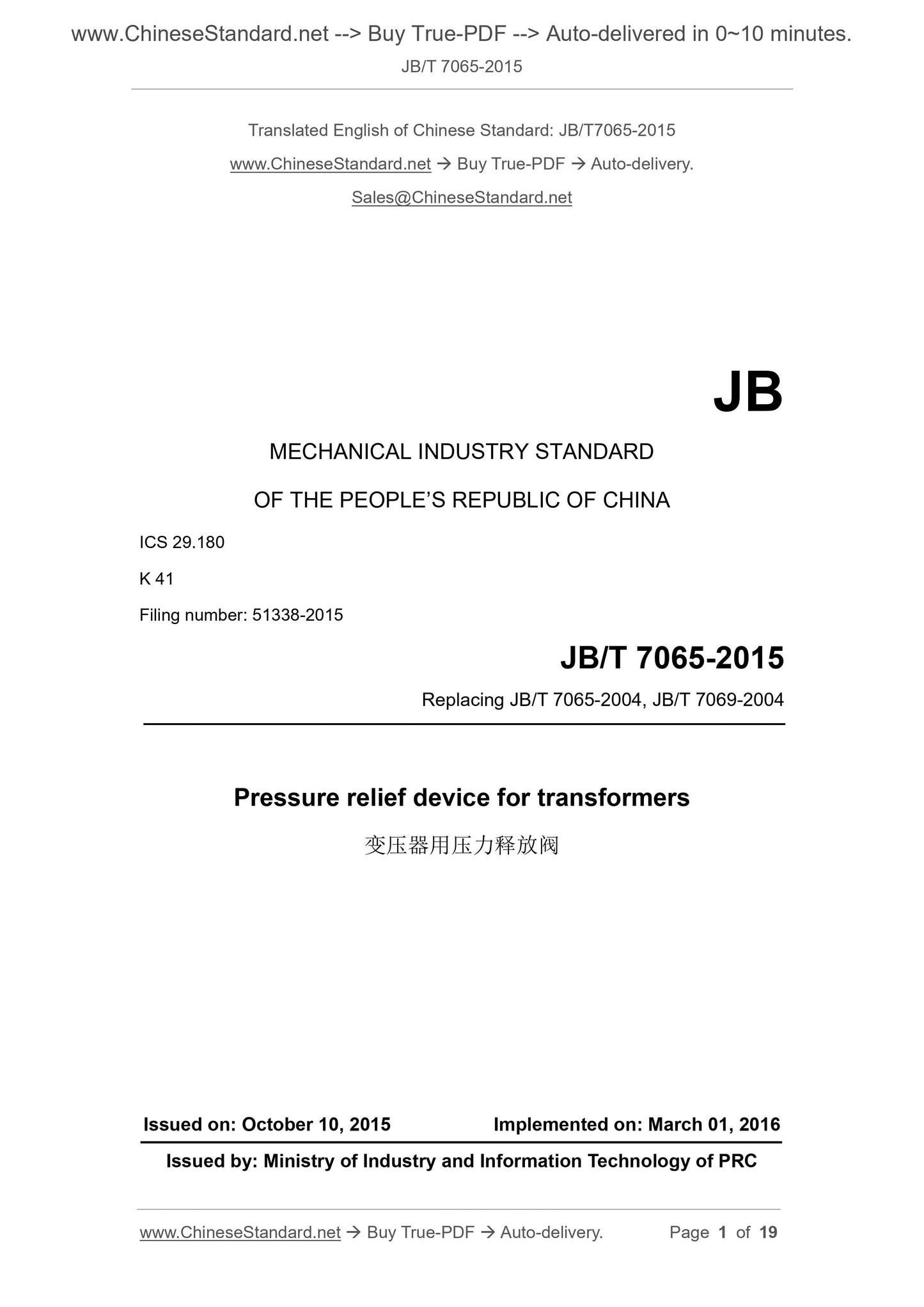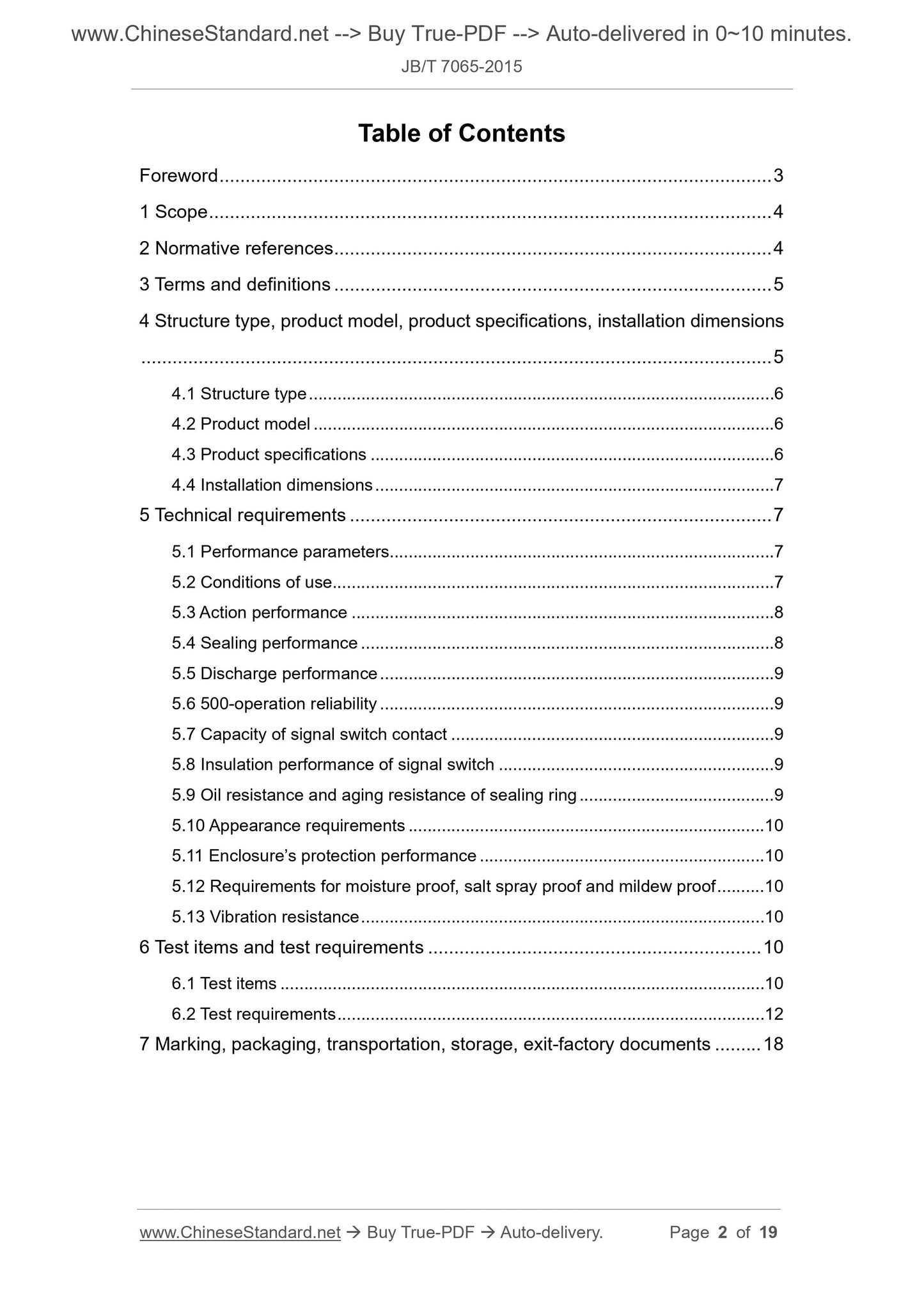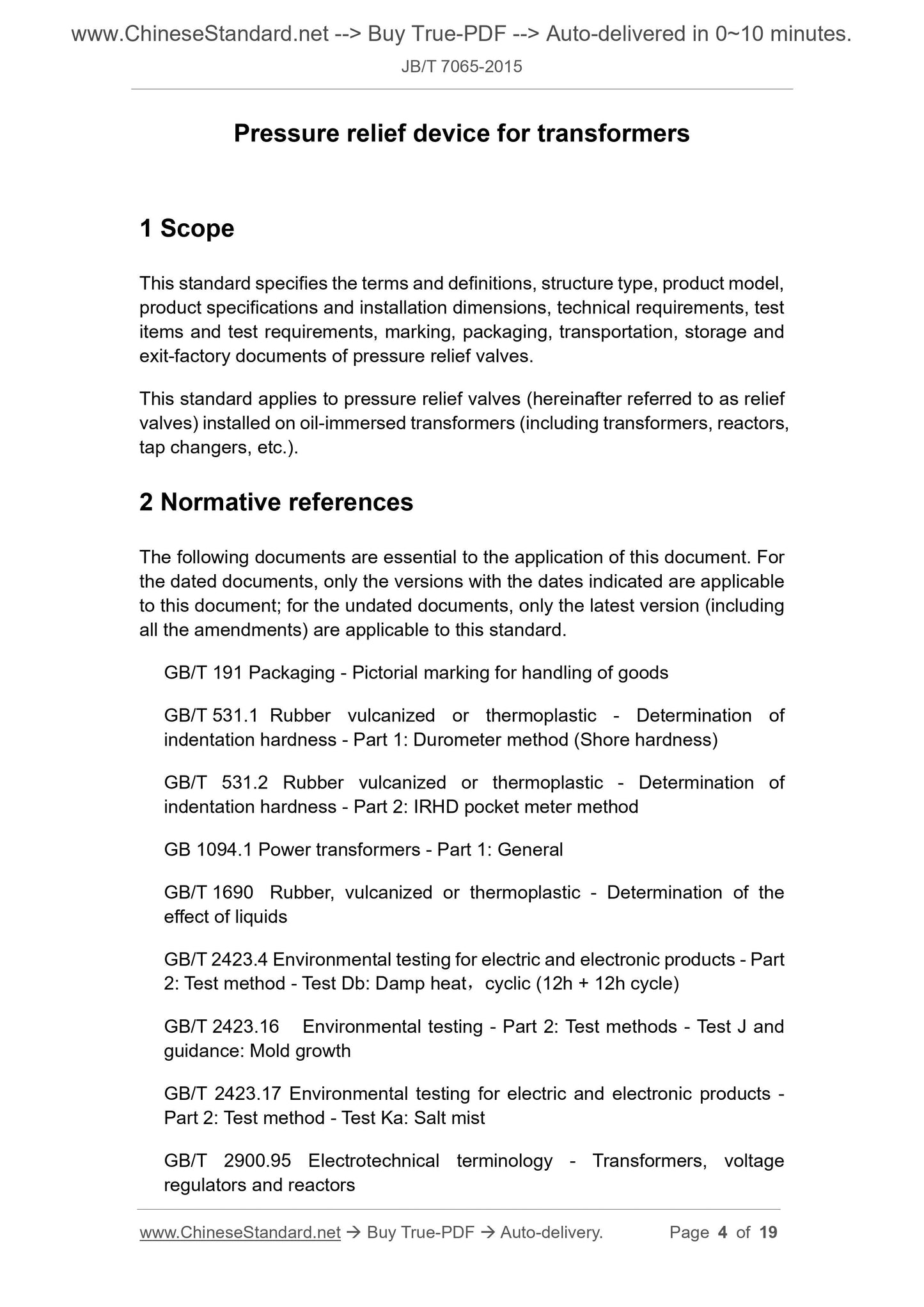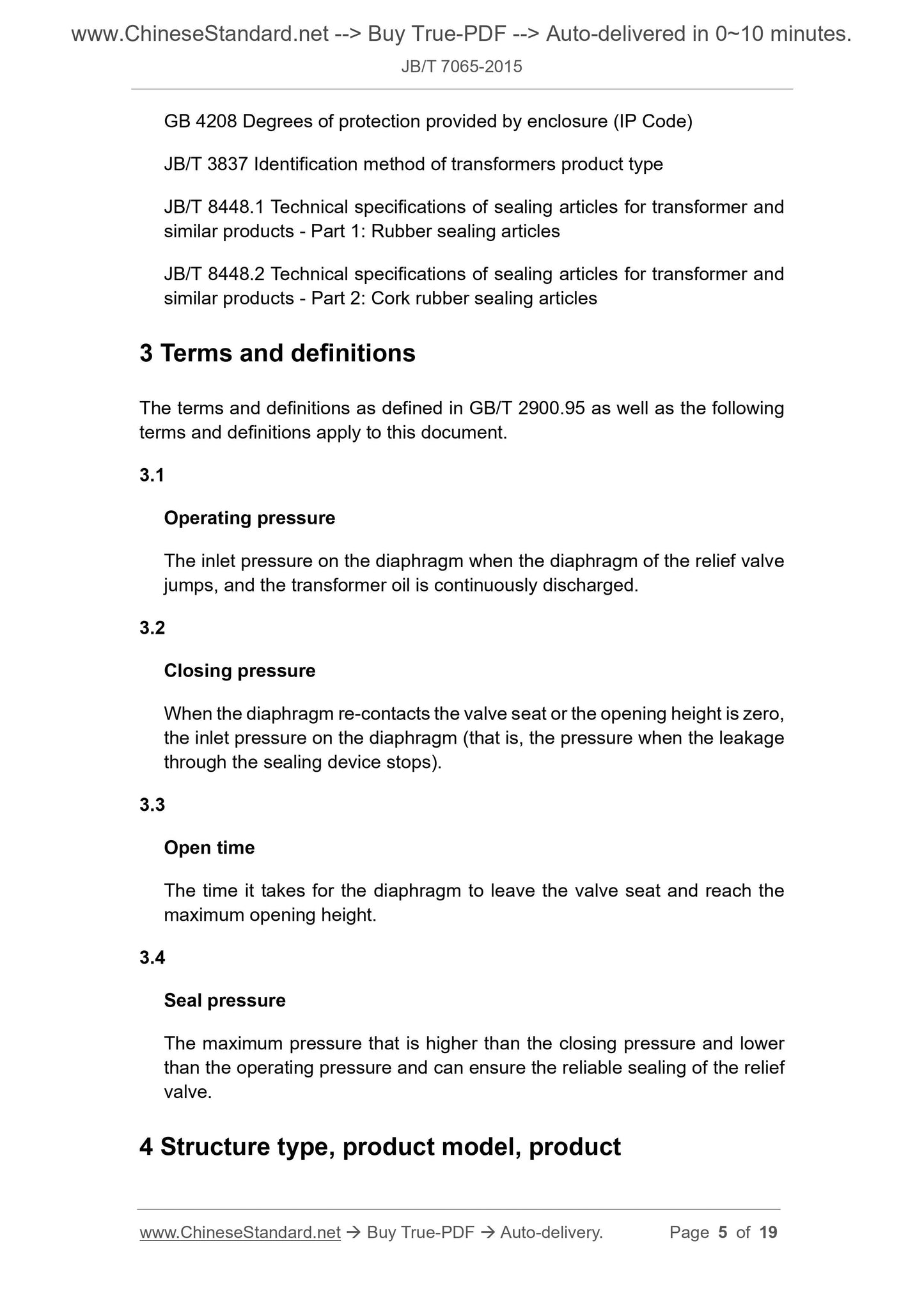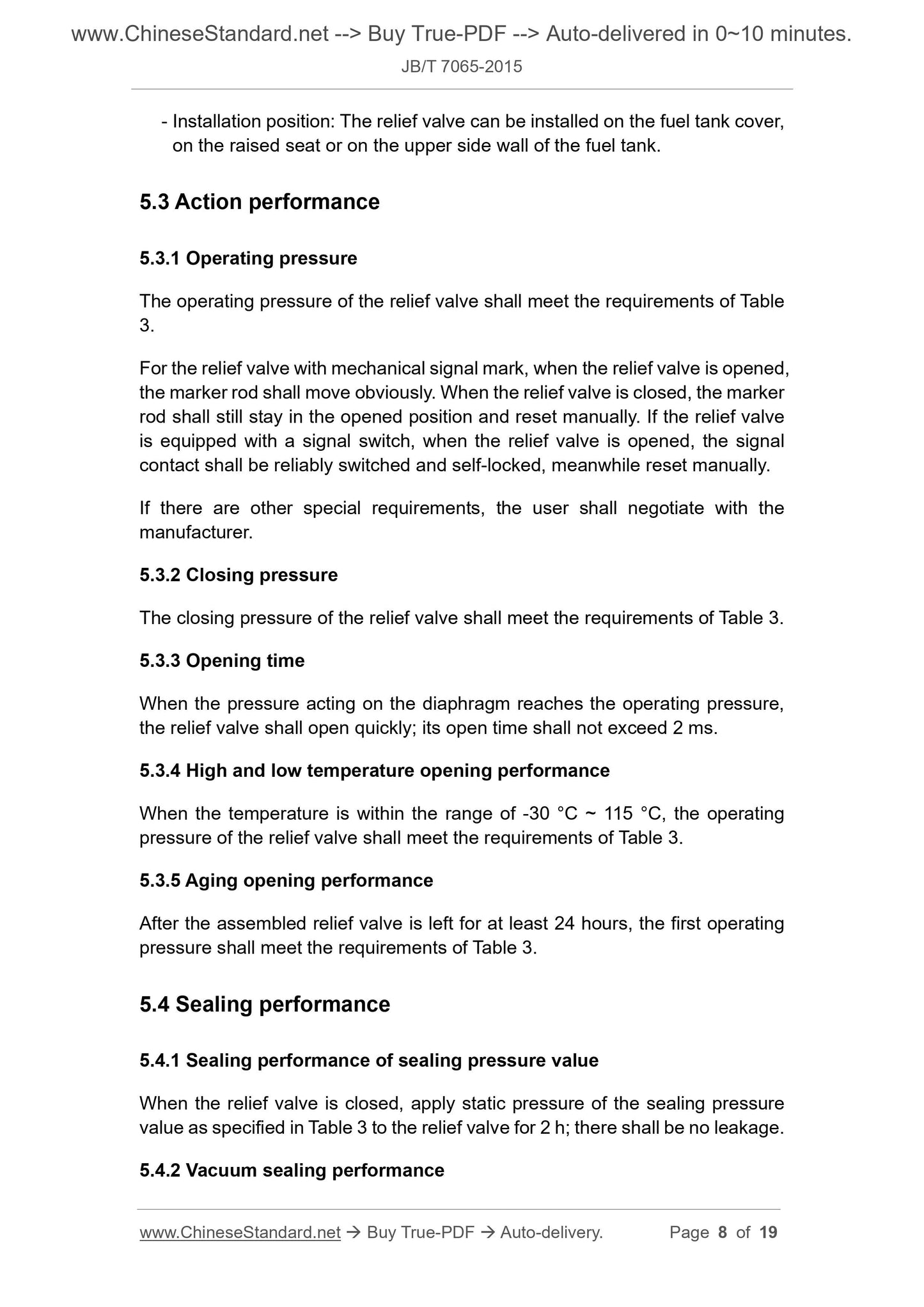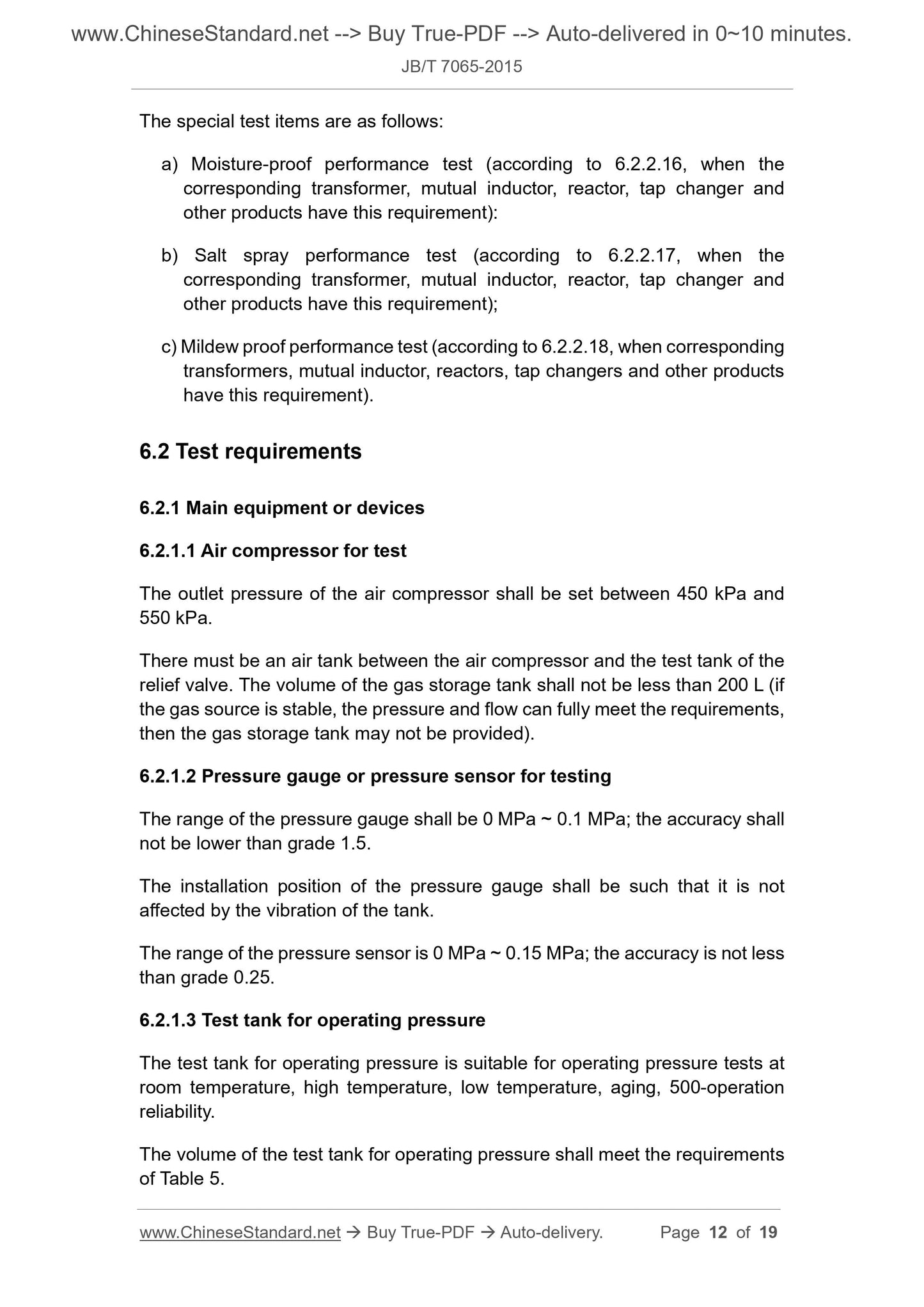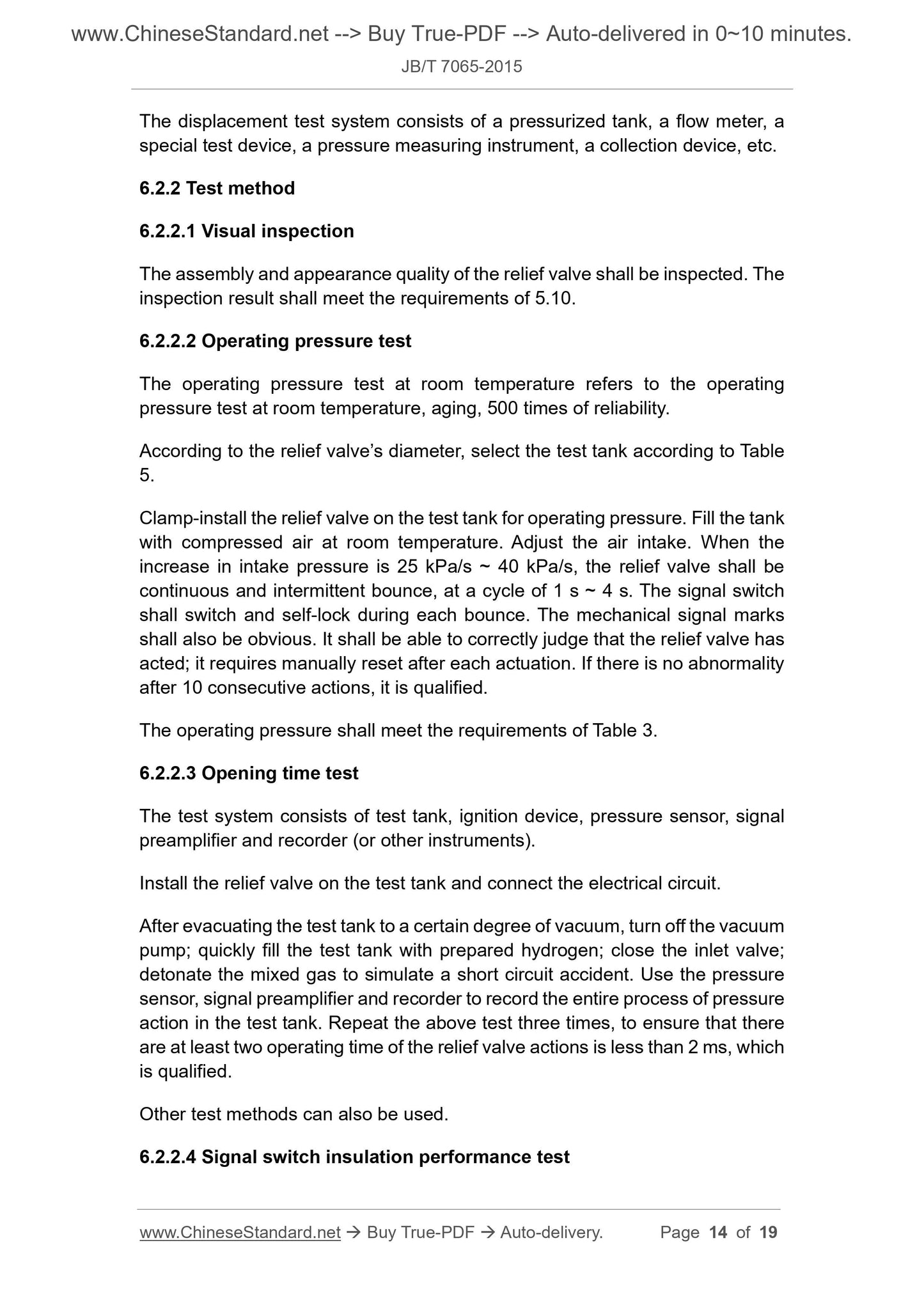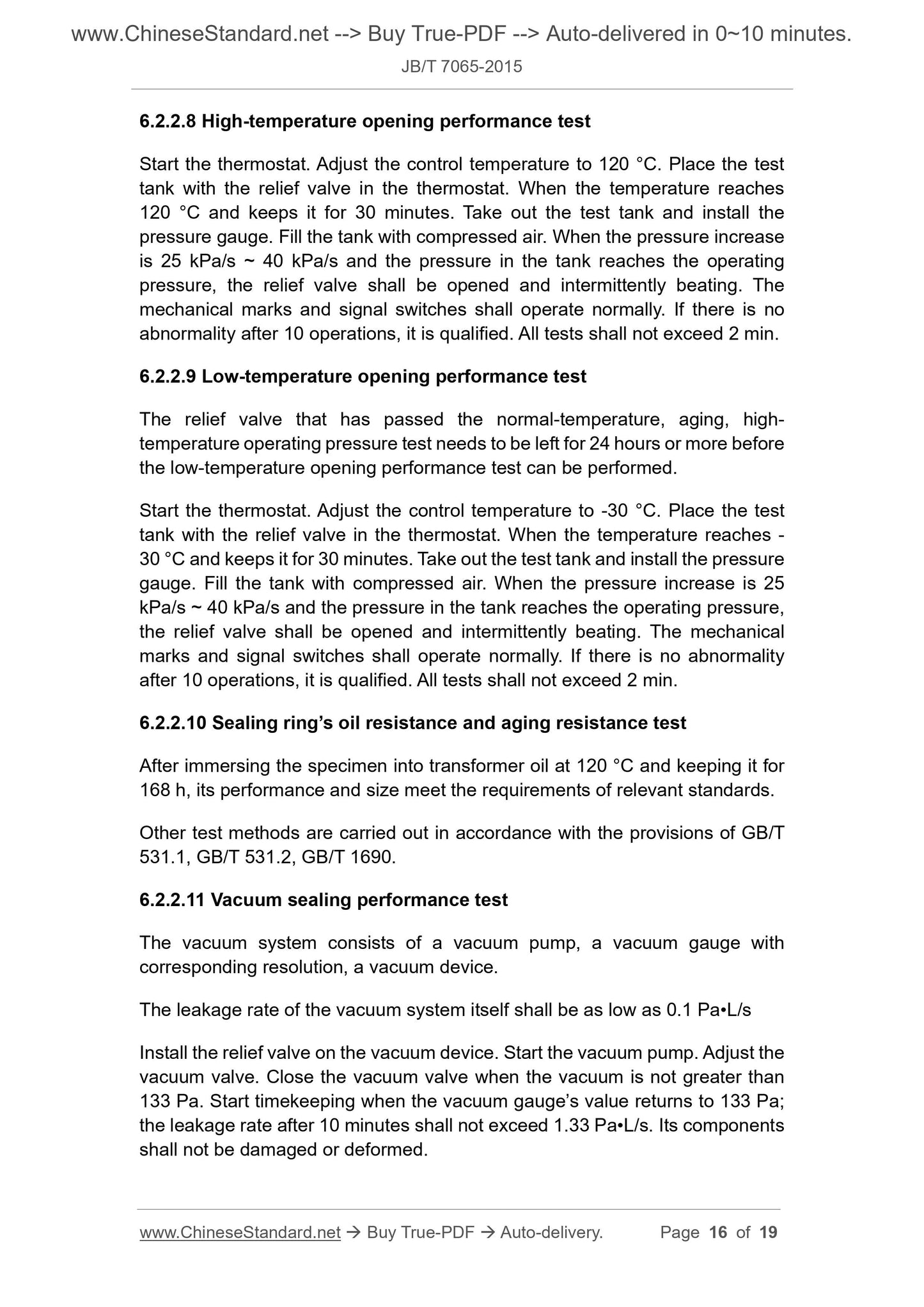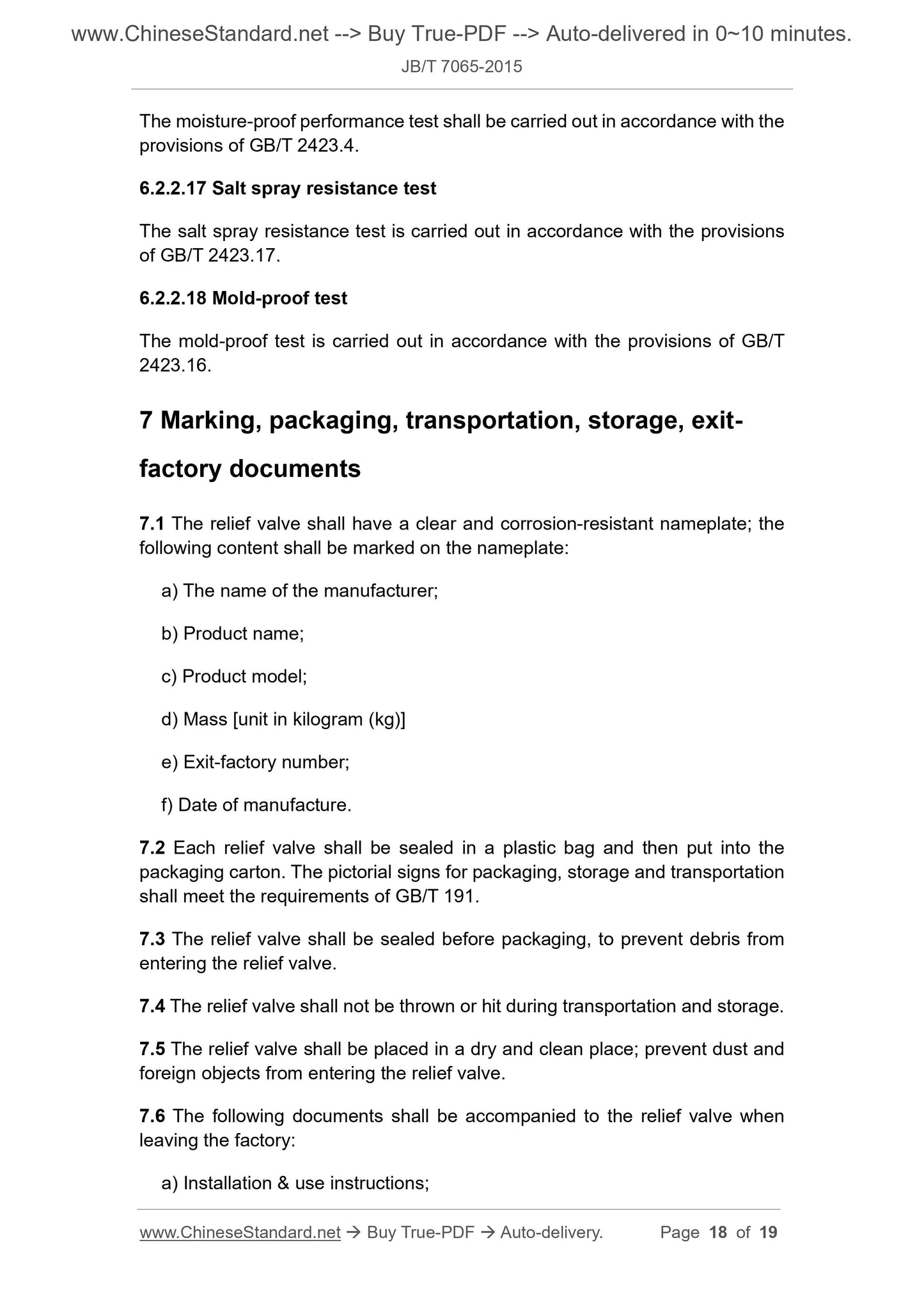1
/
of
10
www.ChineseStandard.us -- Field Test Asia Pte. Ltd.
JB/T 7065-2015 English PDF (JB/T7065-2015)
JB/T 7065-2015 English PDF (JB/T7065-2015)
Regular price
$145.00
Regular price
Sale price
$145.00
Unit price
/
per
Shipping calculated at checkout.
Couldn't load pickup availability
JB/T 7065-2015: Pressure relief device for transformers
Delivery: 9 seconds. Download (and Email) true-PDF + Invoice.Get Quotation: Click JB/T 7065-2015 (Self-service in 1-minute)
Newer / historical versions: JB/T 7065-2015
Preview True-PDF
Scope
This standard specifies the terms and definitions, structure type, product model,product specifications and installation dimensions, technical requirements, test
items and test requirements, marking, packaging, transportation, storage and
exit-factory documents of pressure relief valves.
This standard applies to pressure relief valves (hereinafter referred to as relief
valves) installed on oil-immersed transformers (including transformers, reactors,
tap changers, etc.).
Basic Data
| Standard ID | JB/T 7065-2015 (JB/T7065-2015) |
| Description (Translated English) | Pressure relief device for transformers |
| Sector / Industry | Mechanical and Machinery Industry Standard (Recommended) |
| Classification of Chinese Standard | K41 |
| Classification of International Standard | 29.180 |
| Word Count Estimation | 12,197 |
| Date of Issue | 2015-10-10 |
| Date of Implementation | 2016-03-01 |
| Older Standard (superseded by this standard) | JB/T 7065-2004; JB/T 7069-2004 |
| Quoted Standard | GB/T 191; GB/T 531.1; GB/T 531.2; GB 1094.1; GB/T 1690; GB/T 2423.4; GB/T 2423.16; GB/T 2423.17; GB/T 2900.95; GB 4208; JB/T 3837; JB/T 8448.1; JB/T 8448.2 |
| Regulation (derived from) | PRC MIIT Announcement 2015 No.63 |
| Issuing agency(ies) | Ministry of Industry and Information Technology |
| Summary | This standard specifies the terms and definitions of the pressure relief valve, the type of structure, product type, product specifications and installation dimensions, technical requirements, test items and test requirements, marking, packaging, transportation, storage and factory documents. This standard applies to oil-immersed transformers (including the transformer, reactor, tap, etc.) products installed on the pressure relief valve (hereinafter referred to as the release valve). |
Share
